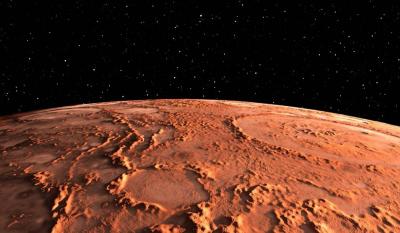A mysterious hole on the surface of Mars has sparked speculation that it could be a gateway to ancient alien life. This pit, resembling a hole and measuring about 150 feet in width, is located on the edge of an ancient volcano. Scientists have suggested that it may protect life forms from the radiation of the red planet and harsh conditions. While scientists are uncertain about the depth of the hole, they stated that it is likely a lava tube formed during a volcanic eruption, and the deep tunnel could serve as a shelter for astronauts preparing to explore Mars.
The University of Arizona recently shared an image of the Mars hole as part of its "Image of the Day" this month, igniting further discussion about its potential impact on future scientific missions. Although the image was captured by the HiRISE camera on NASA's Mars Reconnaissance Orbiter (MRO), which was about 256 km above the Martian surface in 2022, scientists are still working to uncover how or why these holes exist.
Scientists have hypothesized that the holes are "skylights," where the ground collapsed above lava tubes, according to Brandon Johnson, a geophysicist at Purdue University who studies archaeological pits throughout the solar system. Lava tubes are underground passages, similar to long caves, that form during a volcanic eruption. As lava flows down, its surface cools and solidifies, creating a dark crust that acts as insulation for the flowing lava beneath it. This allows the lava to remain hotter and flow further, leaving a hollow tunnel behind.
Johnson stated to Business Insider that these holes on Mars are intriguing because they are places astronauts might be able to access while being shielded from radiation. The thin Martian atmosphere and the lack of a global magnetic field like Earth's create dangerous radiation levels. Radiation poses a significant challenge for astronauts who may be exposed to high-energy cosmic rays that can cause long-term health problems such as cataracts, heart diseases, cancer, genetic damage, and death.




